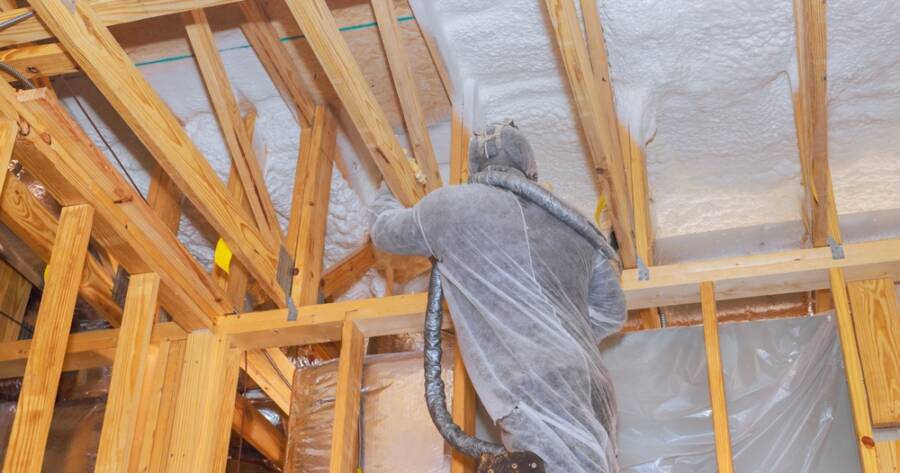Keeping your home comfortable in every season depends as much on insulation as it does on heating or cooling systems. The right insulation materials regulate temperature, reduce energy loss, and create a quieter, more efficient home. Whether you live in a hot, humid climate or a region with cold winters, choosing the right type of insulation can make a major difference in both comfort and energy costs. Understand and select the best materials for year-round performance.
Understanding How Insulation Works
Insulation creates a thermal barrier that slows the transfer of heat between indoors and outdoors. In winter, it helps keep warm air inside; in summer, it keeps the heat out. The effectiveness of insulation is measured by its R-value, which indicates resistance to heat flow. The higher the R-value, the better the insulation’s performance.
Different areas of your home—attics, walls, basements, and floors—have unique insulation needs. For example, attics often require thicker insulation because heat rises, while basement walls may need moisture-resistant materials. Understanding these differences helps you select the right product for each part of your home rather than relying on a one-size-fits-all approach.
Fiberglass: The Longtime Standard
Fiberglass remains one of the most common and affordable insulation materials used in U.S. homes. It comes in batts, rolls, and loose-fill forms, making it versatile for different spaces. Fiberglass works by trapping air in fine glass fibers, which slows heat transfer effectively.
The key to getting the best performance from fiberglass is proper installation. Gaps, compression, or moisture can reduce its efficiency. While fiberglass is noncombustible and durable, it must be handled carefully since the tiny fibers can irritate skin and lungs. Once installed correctly and covered with a vapor barrier or drywall, it provides consistent performance for decades.
Cellulose: An Eco-Friendly Alternative
For homeowners looking for an environmentally friendly option, cellulose insulation offers strong performance with minimal environmental impact. Made primarily from recycled paper treated with non-toxic fire retardants, cellulose is often blown into walls, attics, and floors to fill gaps and crevices that traditional batts might miss.
Because cellulose is dense and tightly packed, it helps block airflow and reduces drafts, which can lead to lower energy use throughout the year. It’s also a good sound barrier, making it ideal for interior walls in multi-level homes. Regular inspection is important, though, as moisture can reduce its effectiveness over time if not properly sealed.
Spray Foam: Superior Air Sealing and Flexibility
Spray foam insulation is popular in newer and energy-efficient homes due to its ability to form an airtight seal. Available in open-cell and closed-cell varieties, spray foam expands when applied, filling cracks and small gaps that other materials may leave behind.
Open-cell foam is softer and provides excellent soundproofing, making it great for interior walls or ceilings. Closed-cell foam is denser and offers a higher R-value, along with moisture resistance that’s valuable in basements and exterior walls. Professional installation is typically recommended, as the application process involves specialized equipment and safety measures. Once cured, spray foam delivers some of the best all-around insulation performance available today.
Rigid Foam Panels: Lightweight and Moisture Resistant
Rigid foam boards, sometimes called foam panels, are another versatile insulation material. They’re made from materials such as expanded polystyrene (EPS), extruded polystyrene (XPS), or polyisocyanurate. These boards provide strong thermal resistance while also resisting moisture—making them an excellent choice for foundations, exterior walls, and under floors.
Rigid foam panels are easy to cut and install, often used in combination with other insulation types. They can be applied directly to framing or used to add an extra thermal layer behind drywall. Their strength and low water absorption make them ideal for use in damp environments where traditional insulation might degrade over time.
Reflective and Radiant Barriers: Best for Hot Climates
In areas where cooling is a bigger concern than heating, reflective insulation or radiant barriers can make a noticeable difference. These materials use reflective surfaces, often aluminum foil, to bounce heat away from living spaces. They’re typically installed in attics or under roofs where solar heat is strongest.
While radiant barriers don’t add much R-value, they work by reducing heat gain, which helps air conditioning systems run more efficiently. This makes them a practical addition in southern regions of the U.S., where sunlight and high temperatures are constant challenges.
Maintaining Insulation for Peak Efficiency
Even the best materials lose effectiveness if they’re not properly maintained. Periodic inspection ensures there are no gaps, leaks, or areas compacted by moisture. Sealing air leaks around windows, doors, and vents complements insulation performance, preventing conditioned air from escaping.
Homeowners should also check attic ventilation to prevent moisture buildup, which can compromise insulation and lead to higher energy bills. A well-balanced system of insulation, sealing, and ventilation keeps your home’s temperature consistent and reduces strain on heating and cooling systems.
Investing in Comfort and Efficiency
The best insulation for your home depends on climate, layout, and personal goals—whether that’s lower utility bills, greater comfort, or environmental sustainability. Fiberglass offers reliable value, cellulose brings eco-conscious performance, spray foam delivers airtight protection, and rigid foam ensures lasting moisture resistance.
When chosen wisely and installed correctly, insulation is a one-time investment that pays off every day. By optimizing your home’s insulation, you’ll enjoy steady comfort, reduced noise, and energy efficiency all year long.

